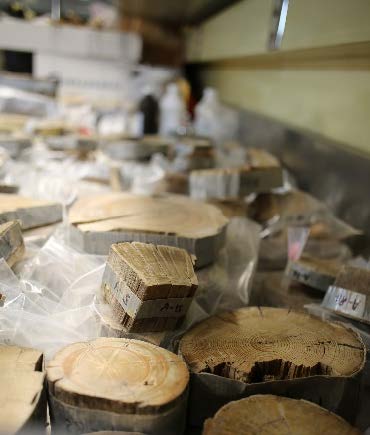
IsotOk
Neo-Inuit architectural wood in western Alaska: rings, isotopes, climate, and chronometric developments
Scientific responsibility :
- Claire Alix
- Valérie Daux
- Glenn P. Juday
- Joshua Reuther
- Scott Shirar
Methodological axes :
Thematic fields :
Disciplinary sectors :
Partnership :
- College of Natural Science and Mathematics, Université d’Alaska, Fairbank
- Archaeology Department, Museum of the North, Université d’Alaska, Fairbanks
Funding :
- DIM PAMIR
Project ID : IDF-DIM-PAMIR-2023-4-016
Summary :
At the onset of the 2nd millennium CE, during the Medieval Climate Anomaly and the transition to the Little Ice Age (MCA-LIA, 1100-1450 CE), the Thule culture, directly ancestral to the Inuit, develop on the coasts of Bering Strait and Alaska. Despite numerous archaeological studies in the region, local climatic indicators remain scarce, which limits our understanding of the complex human-environment interactions at this key period in the emergence of Inuit culture. The exceptional preservation of Thule architectural timbers is however conducive to dendro-chronological and climatic studies but these timbers have yet to be analyzed. Recently, two carbon and oxygen isotope chronologies were built using Alaskan wood (935 to 1157 CE). They are opening the way to paleoclimatic interpretations and provide very encouraging results for dating wood that could not be dated by standard dendrochronology. However, these chronologies remain short (222-yr long) and are based on a small number of timbers (1 to 5). The IsotOk project is an innovative interdisciplinary approach aimed at extending and strengthening these isotopic chronologies, by applying conventional dendrochronology and dendro-isotopy to one of the few dendroarchaeological collections in Alaska: architectural timbers from the Nukleet Thule site (Northwest Alaska) collected in 1949. Housed at the University of Alaska Museum of the North, these samples have never been analyzed. Following a necessary inventory, we propose to select 70 disks for dendrochronological analyses, among which 8 will be used for isotopic analyses at the Laboratoire des Sciences du Climat et de l’Environnement (CEA-Saclay). These renewed chronologies will make it possible to exploit the chronometric and paleoclimatic potential of architectural timbers and refine our understanding of the changing environment of the early Inuit of Alaska to an annual resolution.
Post-doctorate: Juliette Taïeb

